[ad_1]
Does eating cacti sound like a fun adventure?
If not, it’s time to broaden your horizons. The prickly pear cactus is a distinguished palate pleaser that happens to be surprisingly common, and every survivalist should know how to harvest, process, and cook it.
Eating something with that many spikes may be a daunting prospect, but you don’t have to dive in alone. Read on to learn how to cook cactus pads correctly so you can take advantage of this nutritious wild edible when you need it most.
Materials for Harvesting and Processing Cactus Pads
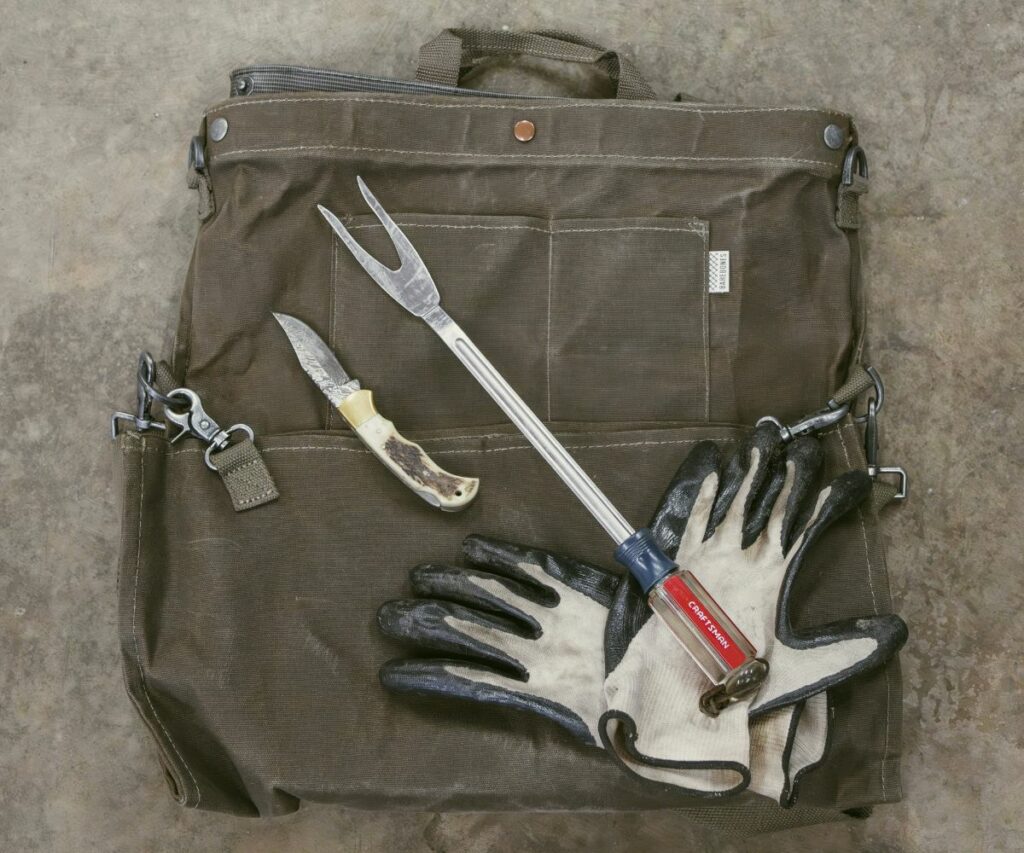
You don’t have to worry about materials when you hunt for more benign wild edibles like chanterelles, but cacti are a different story. Their spikes can do real damage, so gear that will protect you is essential.
You won’t do yourself any good in a survival scenario with injuries to your hands or mouth. Luckily, you don’t need much to harvest prickly pear — you likely already have most of this stuff in a bug-out bag or survival kit.
- Gloves: You need to protect your hands from spines, but you don’t want to bring along your best survival gloves when you harvest. Cactus needles stick in fabric and can be difficult to remove. They could easily ruin a nice pair of gloves, so take a pair that’s ready to be trashed instead.
- Knife: You need a solid survival knife to scrape the spines from the pad. Choose something with a longer blade if you have a choice, but in most cases, any knife will do. I’m fancy and use two knives: one for harvesting and one for removing the glochids.
- Fork: The fork lets you handle and stabilize the cactus pad as you remove its spines. A long barbecue fork works perfectly, but you can also use a dinner fork, screwdriver, pliers, or even a stick.
- Cactus container: Bring a bucket or your favorite foraging bag with a durable liner to transport the harvest. Skip flimsy containers — cactus spines will rip a plastic bag apart and get stuck in a fabric one.
How to Harvest, Process, and Cook Cactus Pads
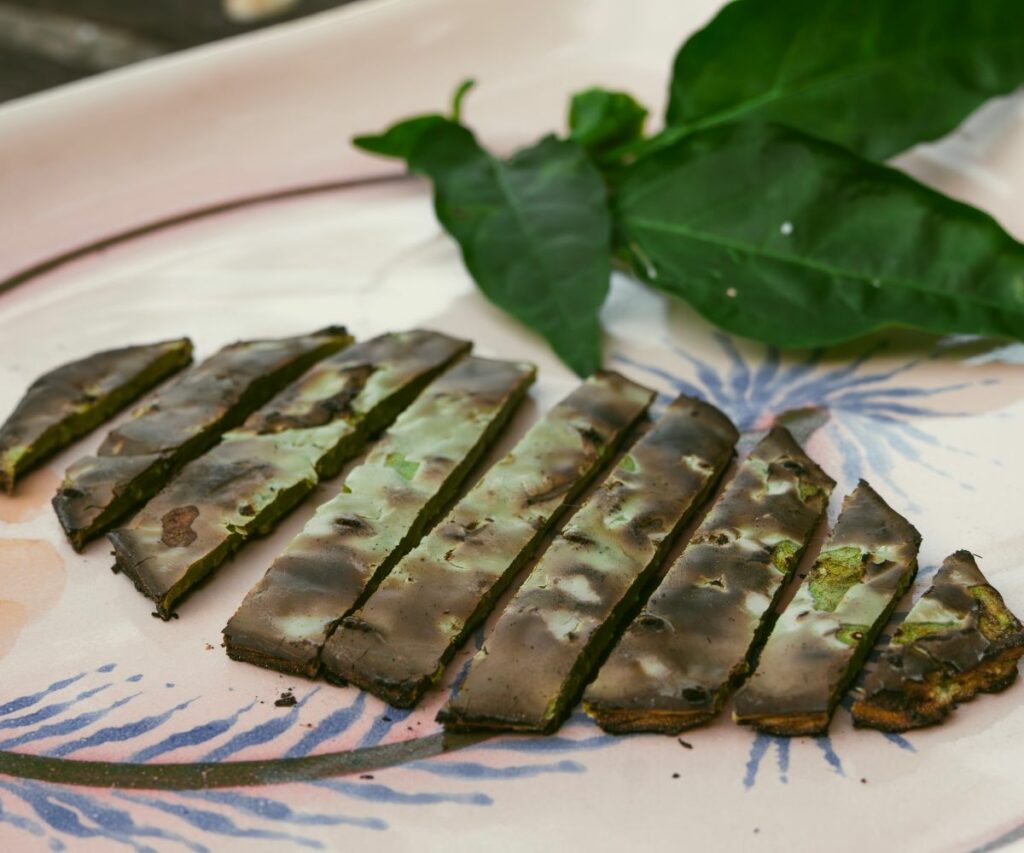
1. Find Your Cactus
Edible cacti are members of the Opuntia family, more commonly known as prickly pear or nopal in Spanish. There are over 150 members in the family, and they’re all easy to recognize with broad, flat pads. Here in the US, there are Opuntia species in nearly every state.
They spread quickly, adapting to and even modifying new habitats to thrive in various regions. In desert climates, they grow prolifically in sandy fields, roadsides, and gardens. If you’re in a temperate zone, search in forest glades that get plenty of sun. They favor rocky shelves and shallow, gravelly soil.
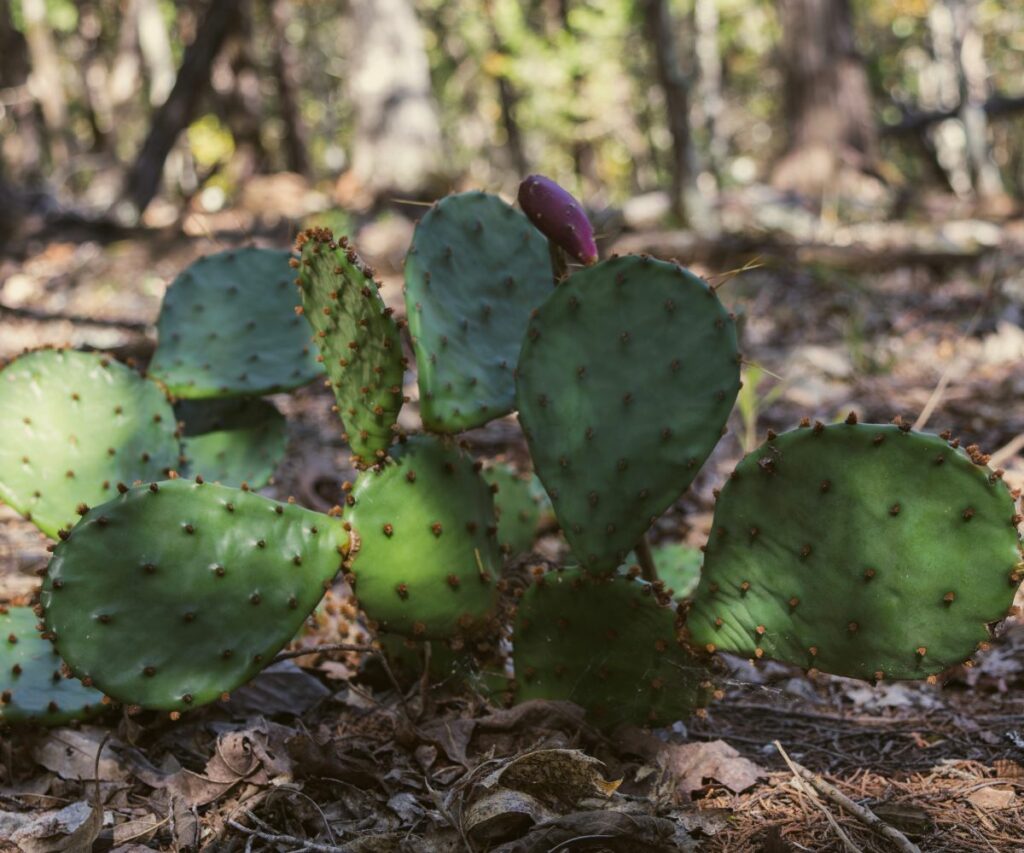
2. Choose the Right Pads at the Right Time
Once you find a prickly pear cactus, examine all its pads carefully. You might be tempted to harvest the biggest ones, but leave them be. Like many fruits and fungi, older pads get woody and become bitter. The best pads are the younger and smaller ones. They should be firm, plump with water, and have a vibrant green color.
Young pads tend to have fewer spikes, especially early in the season. Spring is best for eating cacti, but you can harvest and eat them anytime. They usually won’t die off in winter, especially in southern climes.
While you can’t always time a harvest perfectly, gathering pads in the morning is preferable. Opuntia species are very high in oxalic acid, a sour-tasting antinutrient that prohibits vitamin and mineral absorption and can cause gastrointestinal distress. Oxalic acid content is lowest in the morning, so harvesting a few hours after sunrise will improve health and taste outcomes.
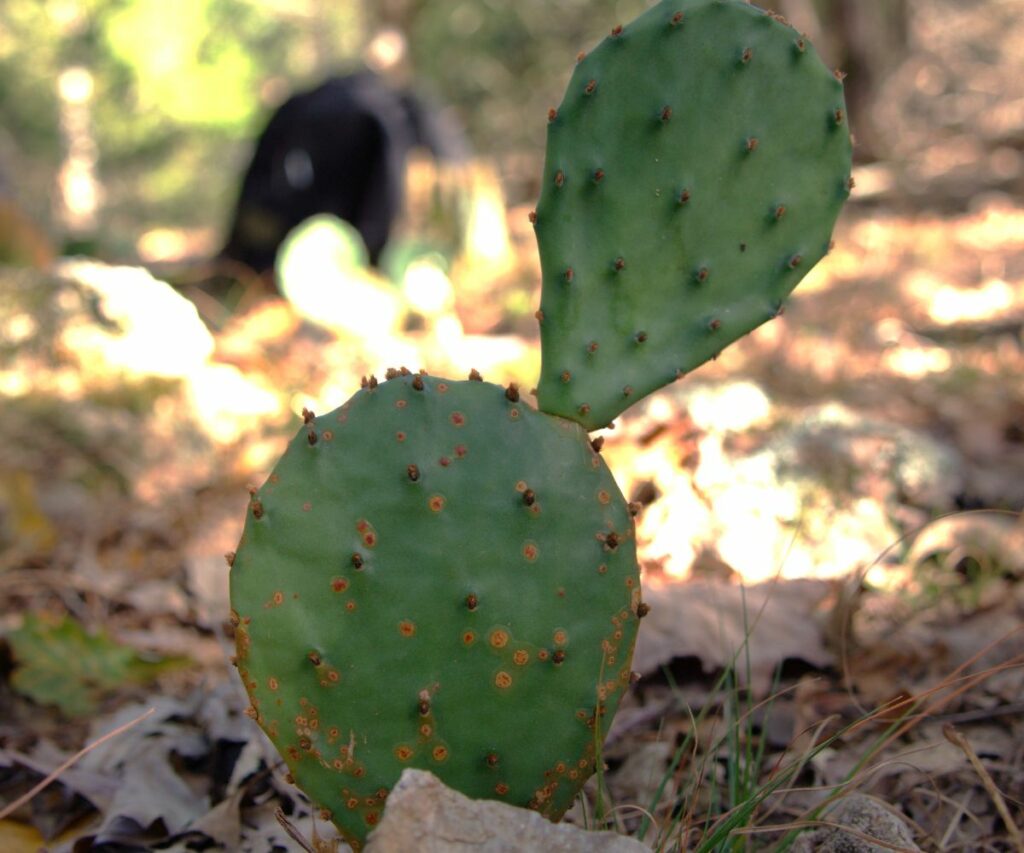
3. Harvest Your Pads
Carefully grip your chosen prickly pear pad in a gloved hand, avoiding the larger spikes. Once your hand is stable, twist the young pad around as far as possible. Twisting will strain its fibers and make removing it easier.
Use your knife to cut carefully through the bottom of the pad where it attaches to the pad below it. You should insert the knife at or directly above where you have twisted the pad. Try your best to avoid slicing through the middle portion of the pad since it won’t grow back this way. Aim for the node or point of attachment.
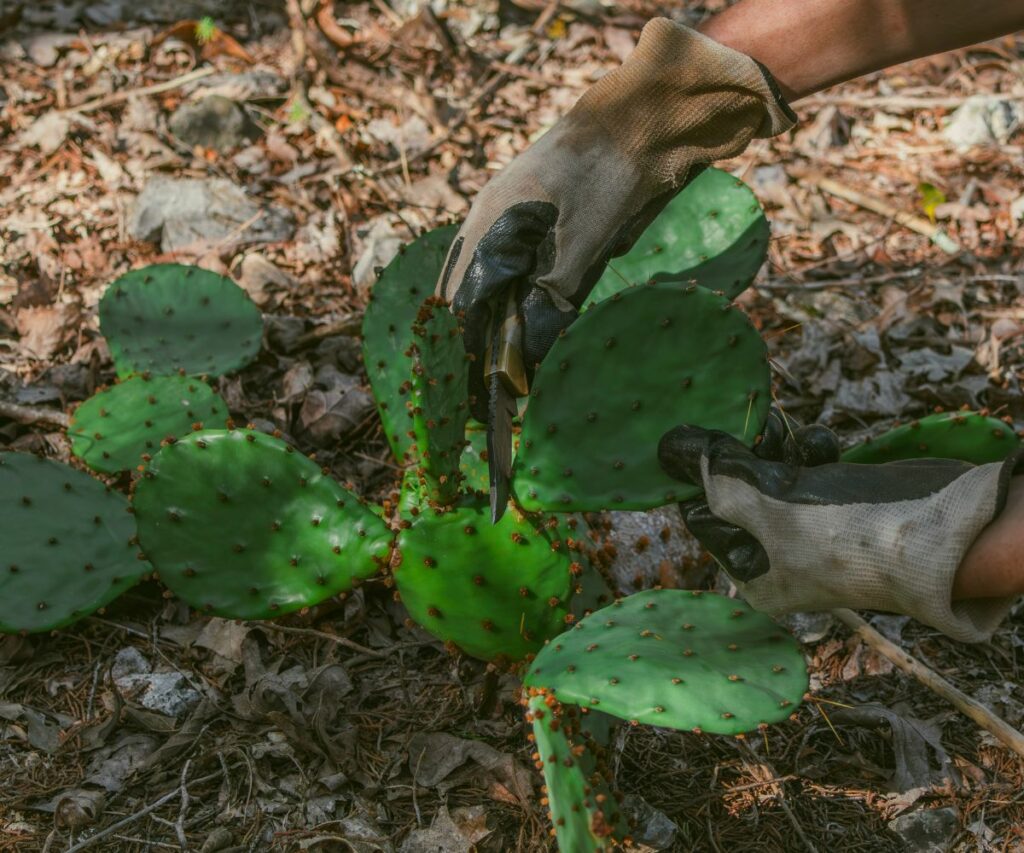
4. Remove Spines
I like to remove the biggest spines in the field before I take the pads home. They pierce through gloves easily, presenting a potential hazard and making the pads more challenging to handle.
Stabilize each pad on the ground. Use your knife to pry away the spikes where they protrude from the pad at the areole node, but be cautious. Both the spikes and glochids (mini spikes) appear at the areole. Avoid touching it directly, or you might get a bunch of glochids stuck on your glove.
I have always found glochids much easier to remove in a more controlled setting. Once you have removed the spines from your prickly pear, place the pads in your bucket and head back to basecamp for further processing.
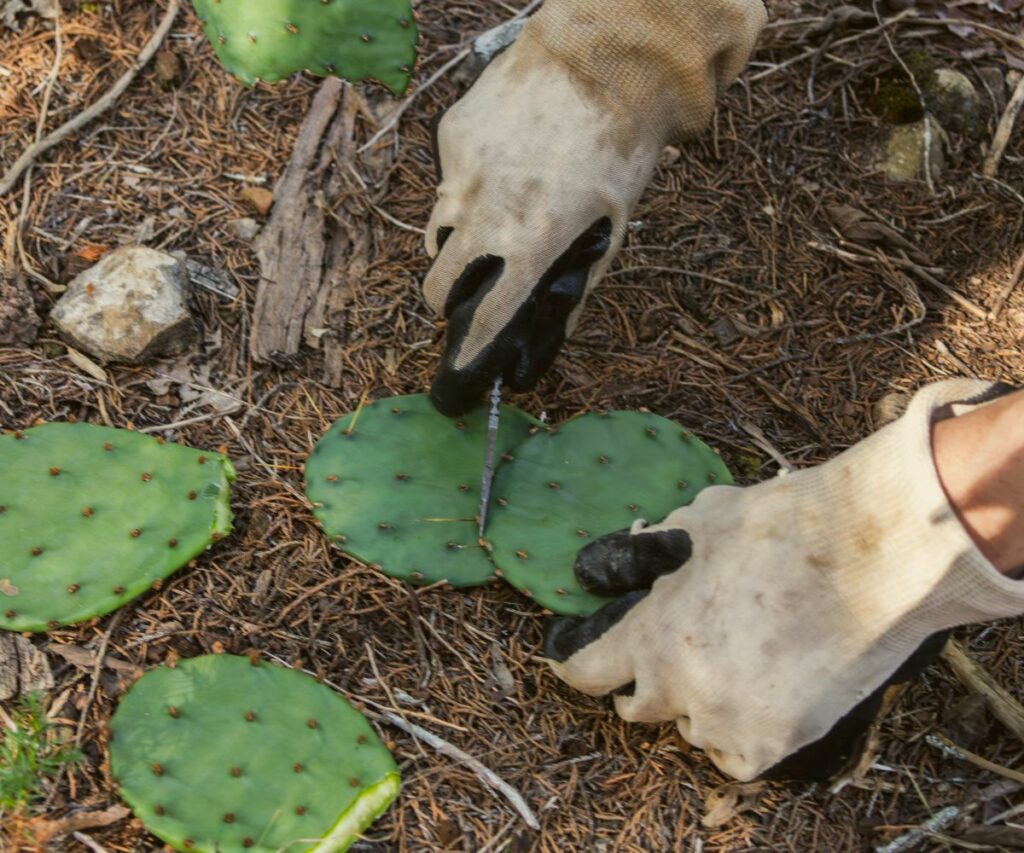
5. Remove Glochids
Glochids are subtle and tricky. These small, thin, hair-like tufts grow around the base of longer spines. You can hardly see them, but you can definitely feel them. Since glochids exist for propagation rather than protection, they are shaped like fishhooks — the barbs stick easily and are very difficult to extract.
You can avoid getting stuck by practicing safe glochid removal. It might be wise to glove up here. I usually go bare, but you can make that decision depending on your tools and skill level.
First, place your cactus pad on a hard surface and stabilize it with the fork. Then, use your knife to cut away the outer edges of the pad. These are usually full of areoles and have too many glochids to bother with.
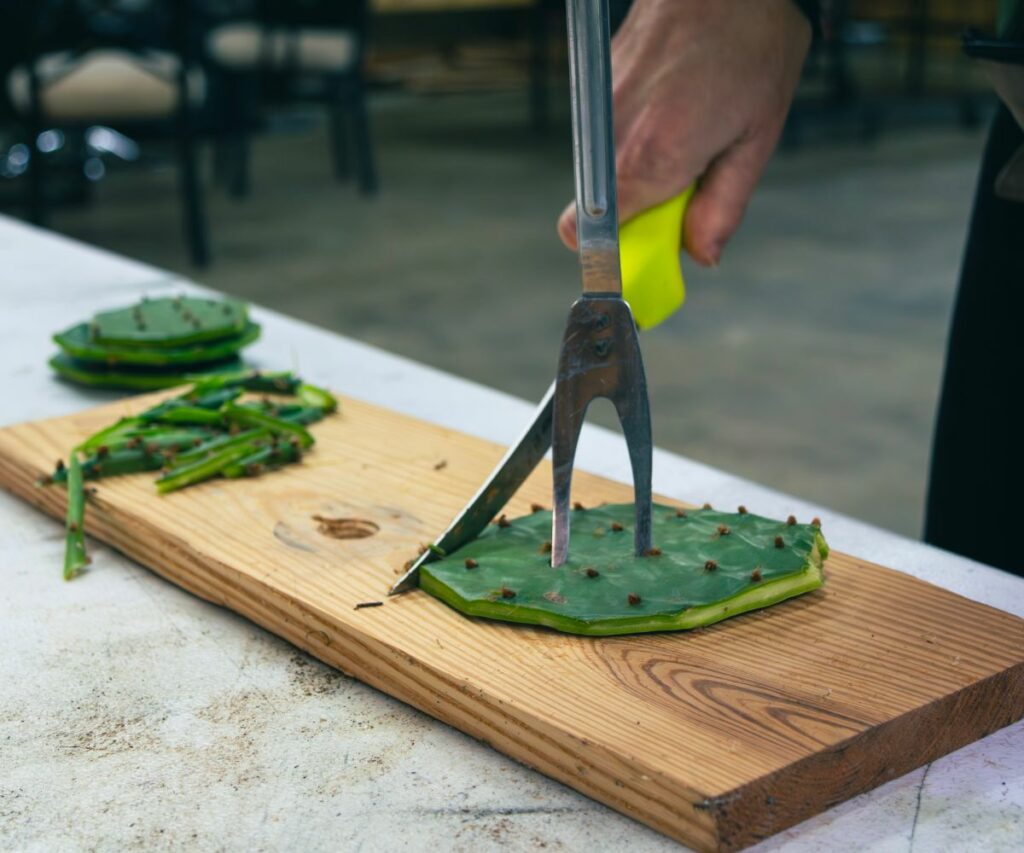
Once you’ve cut away the edges, turn your knife at an angle and scrape the cactus’ surface. The glochids will come off as you drag the knife over them. Once the loose ones are gone, press down harder and slice away the prickly pear cactus’ flesh at the areole to eradicate the rest.
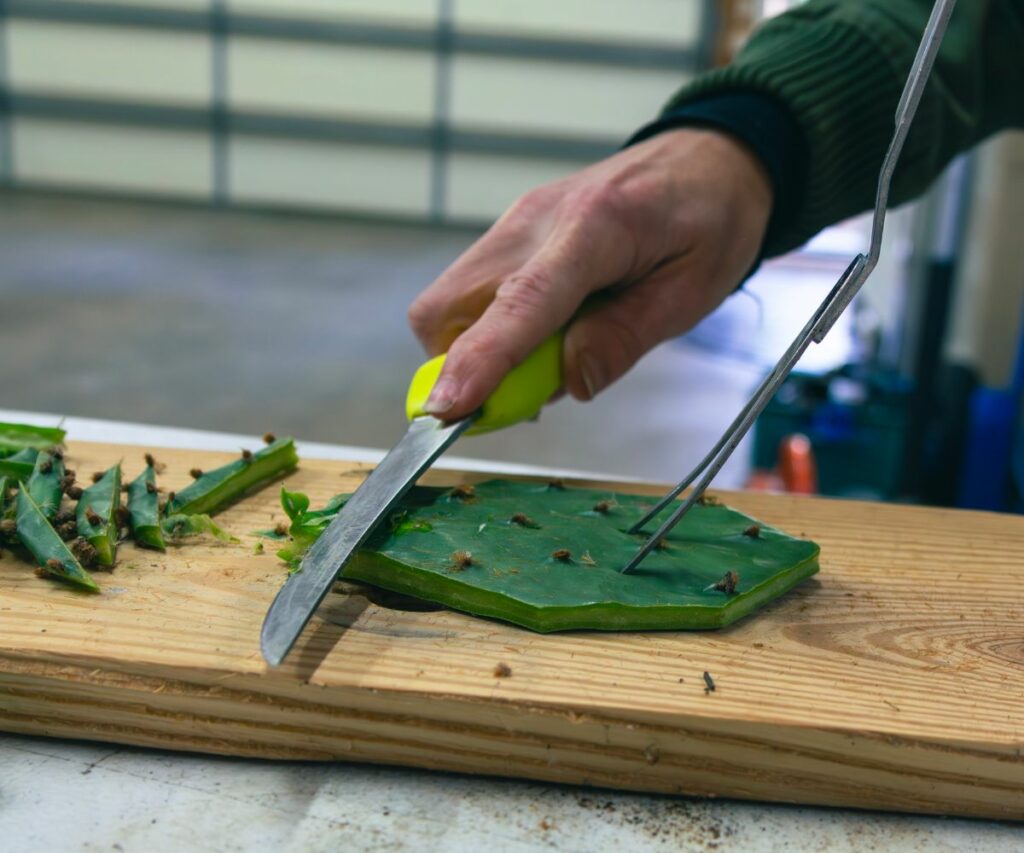
6. Wash Thoroughly
Even after you scrape away the cactus flesh, some glochids might remain. Wash the pads thoroughly under running water for a few moments to remove them. At this point, you should still be using a fork rather than your hands to handle them.
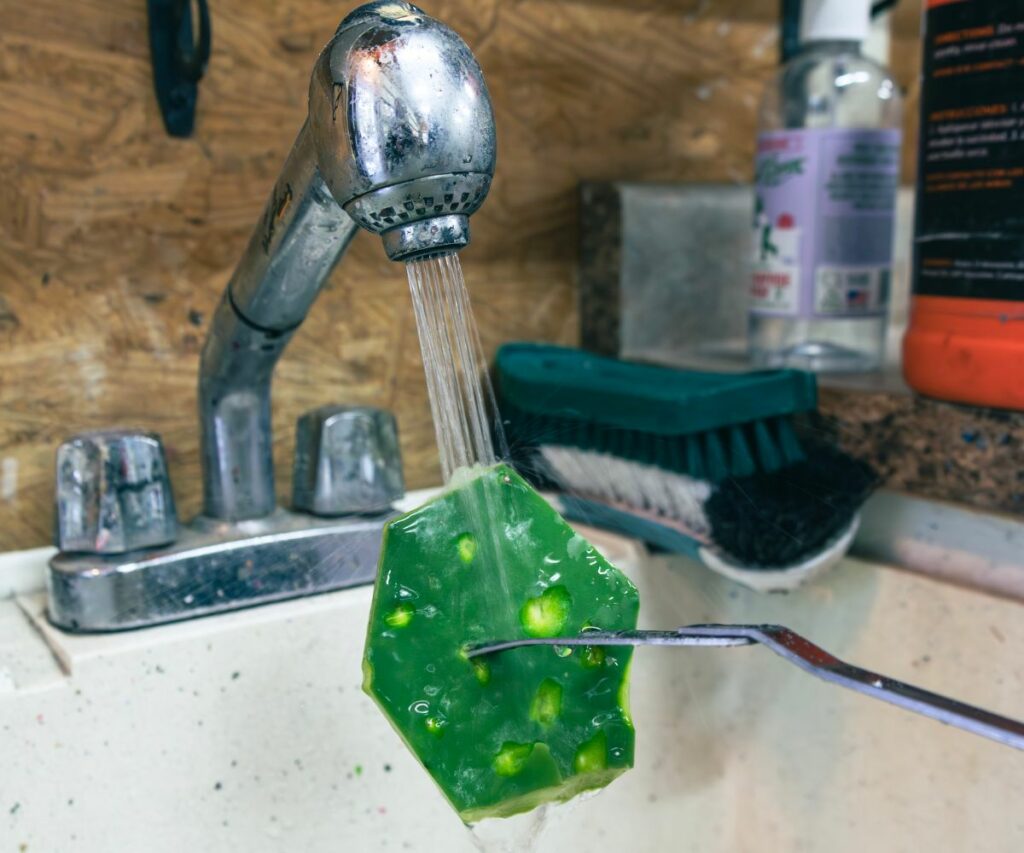
7. Singe for Safety
Some glochids might hang on doggedly even after you wash the pads. If you suspect you might not have gotten all of them out, you should singe your prickly pear pad. You can do this over an open fire, grill, or gas stove. The fire should burn off all the remaining glochids.
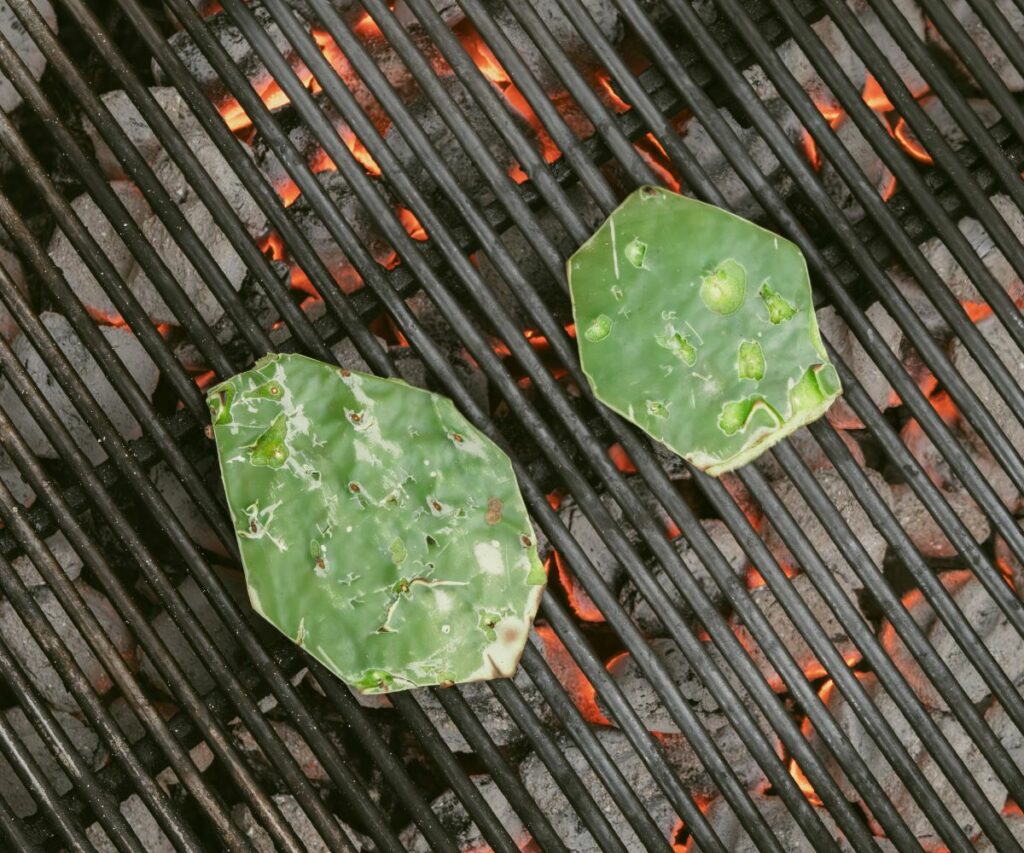
8. Cook Your Cactus Feast
All that’s left to do is cook and eat your prickly pear cactus. I singe it over a grill and cook it on charcoal for a crunchy exterior and soft interior. It takes five to seven minutes on each side to fully cook, but some may like it cooked less or more depending on taste. Once it’s done, just add salt and chow down.
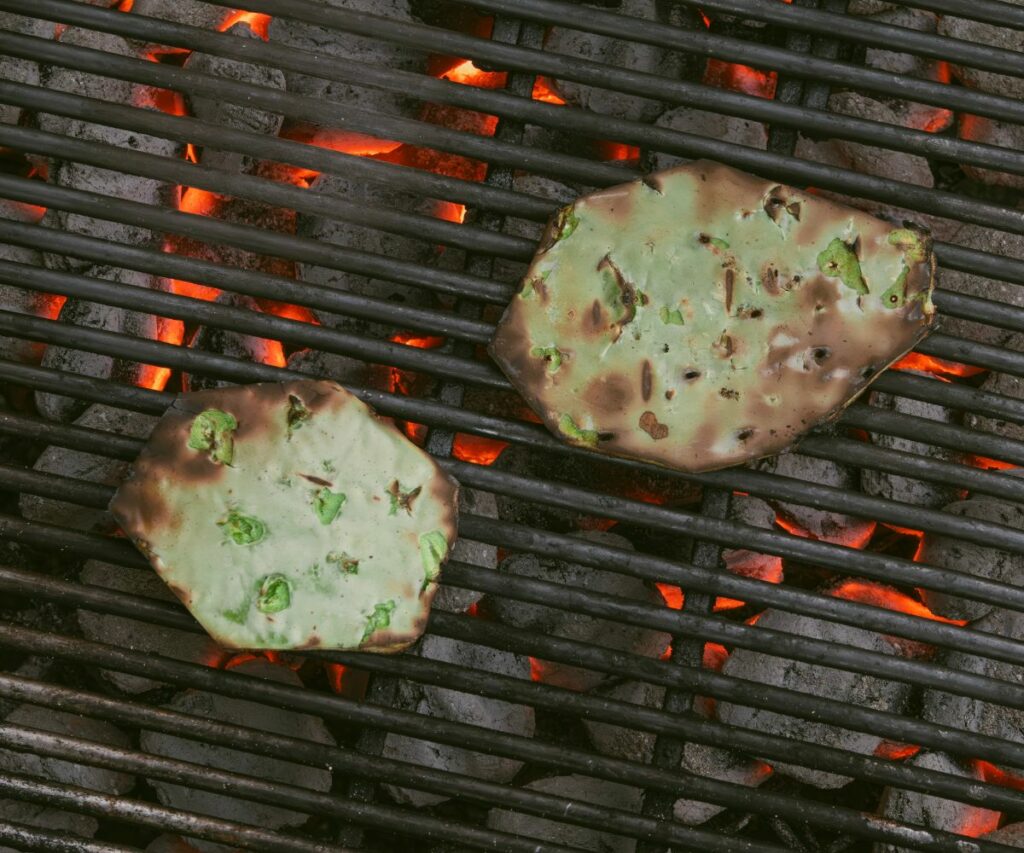
If you don’t have a grill, you can boil your cactus. Chop it into strips or chunks about half an inch thick, then bring a pot of salted water to boil on the stove or over a fire. Boil the cactus for about 10 minutes until it is tender. Add the cooked chunks to scrambled eggs, salads, and other dishes, or reserve the water to create a soup base.
Remember that Opuntia cacti have a soft, sticky interior like aloe vera. When cooked, their texture and flavor profile are reminiscent of okra. This can be great to thicken up stews, stir-fries, and gumbos. If you don’t like the sliminess, you can cook it out.
Just sauté the cactus in oil or water for 10–15 minutes until the gelatinous liquid releases. Then, turn the heat up and cook it another 10–15 minutes until the liquid has condensed and dried up. More adventurous cooks can experiment with all sorts of recipes. You can try cactus fries, cactus tacos, or even cactus salsa.
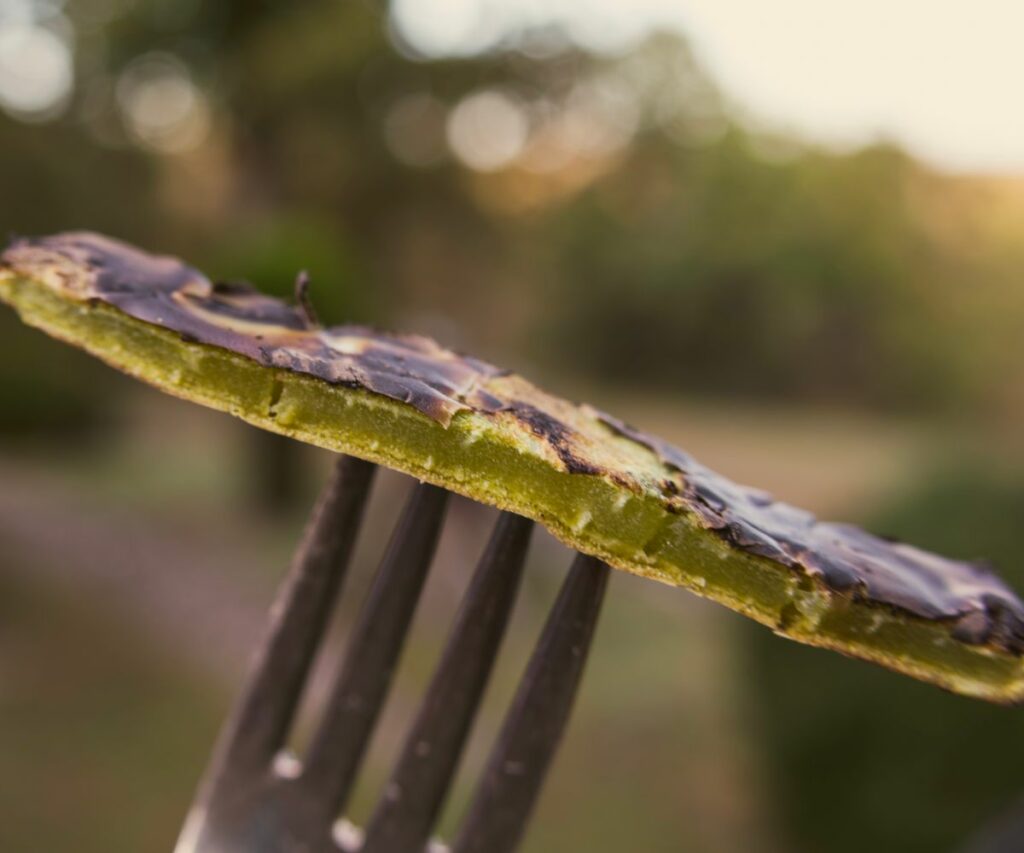
Eating Cactus for Survival: Tips and FAQ
Cacti rank well in the wilderness food pyramid because they’re low risk and easy to obtain. If you’re stranded and hungry in a SHTF situation, prickly pear can sustain you until you reach a more protein-rich food source. Below, I’ve answered some common questions about eating cactus in an emergency.
Can you eat cactus raw?
Yes. You can eat cactus raw, but don’t eat too much. Since oxalic acid is neutralized through cooking, consuming too much raw cactus could upset your stomach.
Can cactus provide water?
Yes. Prickly pear cacti are around 85% water and can provide lifesaving hydration in the wilderness. They also contain electrolyte minerals like magnesium and potassium, which can help your body maintain homeostasis and prevent dehydration.
Can you store cactus to eat later?
Yes. You can store cacti to eat later by pickling them or just leaving unprocessed pads in the shade outside for several days. However, detaching the pads makes them go rancid faster. If the cactus plant is easily accessible, leave the pads on it until you’re ready to cook and eat them.
Are cacti nutritious?
Yes. Cacti are highly nutritious, with respectable amounts of vitamins A and C, calcium, and antioxidants. They don’t have too many calories but contain trace amounts of protein and omega-3 fatty acids. If the cactus has fruit (tuna), use its flesh for carbohydrates and its seeds for protein and fat.
Is prickly pear the only edible cactus?
Not really. There are plenty of other edible cactus fruits, but few cacti have edible pads or leaves. To stay safe, avoid eating any cactus pads you cannot positively identify as Opuntia species.
Ready to chow down? It’s a great idea to practice cooking cacti before disaster strikes so you know what to do immediately when the occasion calls for it.
[ad_2]
Source link
